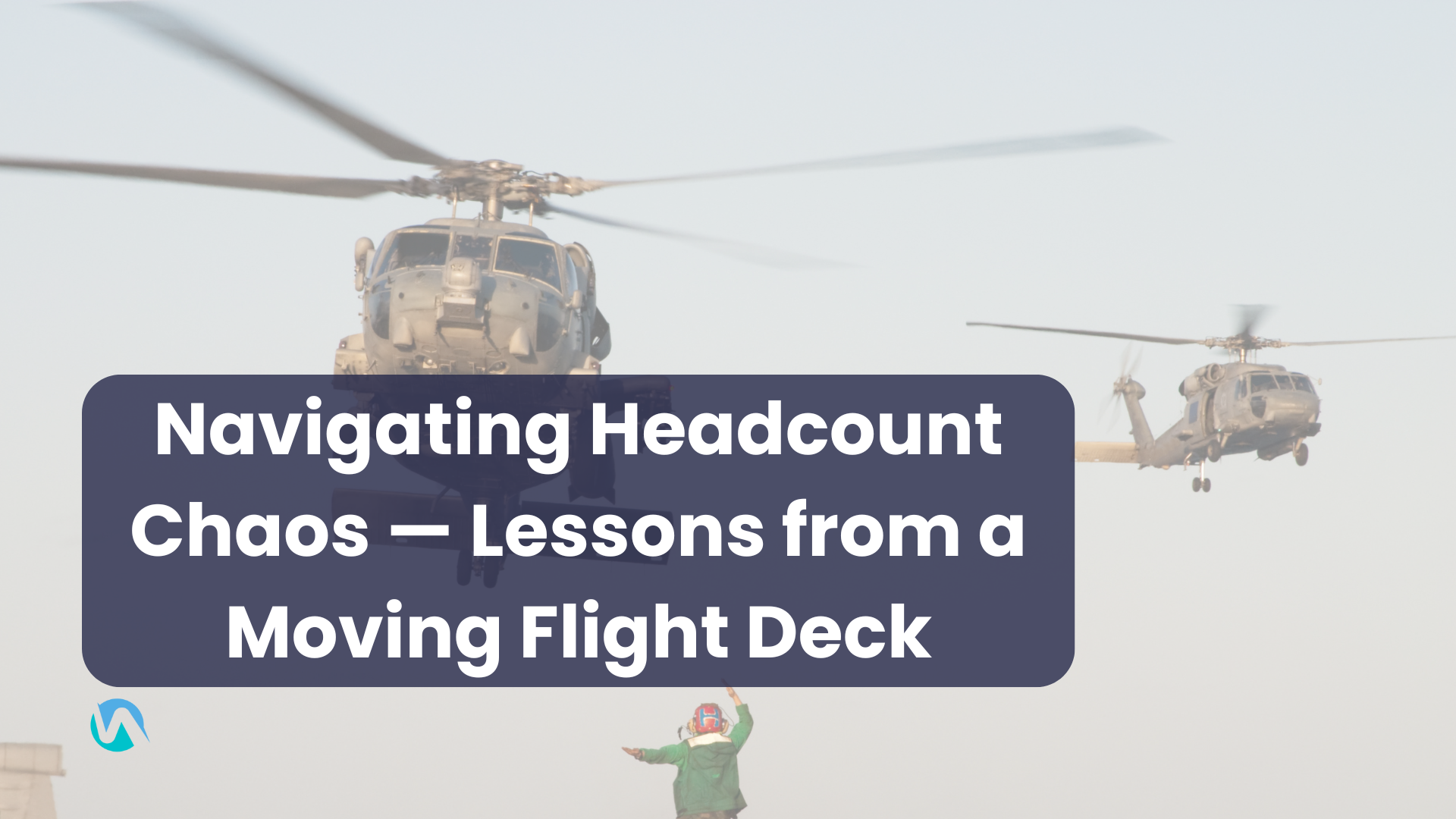Navigating Headcount Chaos — Lessons from a Moving Flight Deck

I started my career as a helicopter engineer in the Royal Navy’s Fleet Air Arm. Only in hindsight have I realized how much that world shaped the way I think about operations, planning, and uncertainty — and how little of it translates naturally into business.
If you’ve never worked in naval aviation, here’s the challenge: when you launch a helicopter from a frigate or destroyer, your landing pad won’t be where you left it. The ship moves — a lot — and you may not be able to use radar or comms to find it again if the mission requires radio silence. So before you take off, you must predict where that moving platform will be two hours later.
Get it wrong, and someone ends up swimming.
You can’t just draw a straight line from where the ship was to where you think it’ll be. You have to account for weather systems, tidal currents, the ship’s planned course, and human judgment. It’s dynamic forecasting under pressure — and the difference between a safe landing and a rescue mission.
That mindset — plan for the future state, not just react to the past — has guided everything I’ve done since.
In supply chain, it meant projecting daily shipment volumes to ensure our warehouses and delivery partners could absorb spikes while keeping two-day delivery promises. In recruiting, it meant modeling headcount months before budgets were finalized, because the best campus candidates get offers before most companies even know how many they need. And now, in headcount planning, it means building models that show how your workforce will evolve under different growth and attrition scenarios — and creating the feedback loops to stay on target.
The common thread is simple: you can’t steer a ship by staring at the wake.
Across industries, the organizations that perform best are those that borrow forecasting discipline from unexpected places — aviation, logistics, even military ops — and apply it to how they plan talent and capacity.
If you’re mapping your 2026 plan and trying to figure out how to “land on a moving deck,” consider which other playbooks you might borrow from.
And if you need a co-pilot to help chart that course, I’d be happy to help.